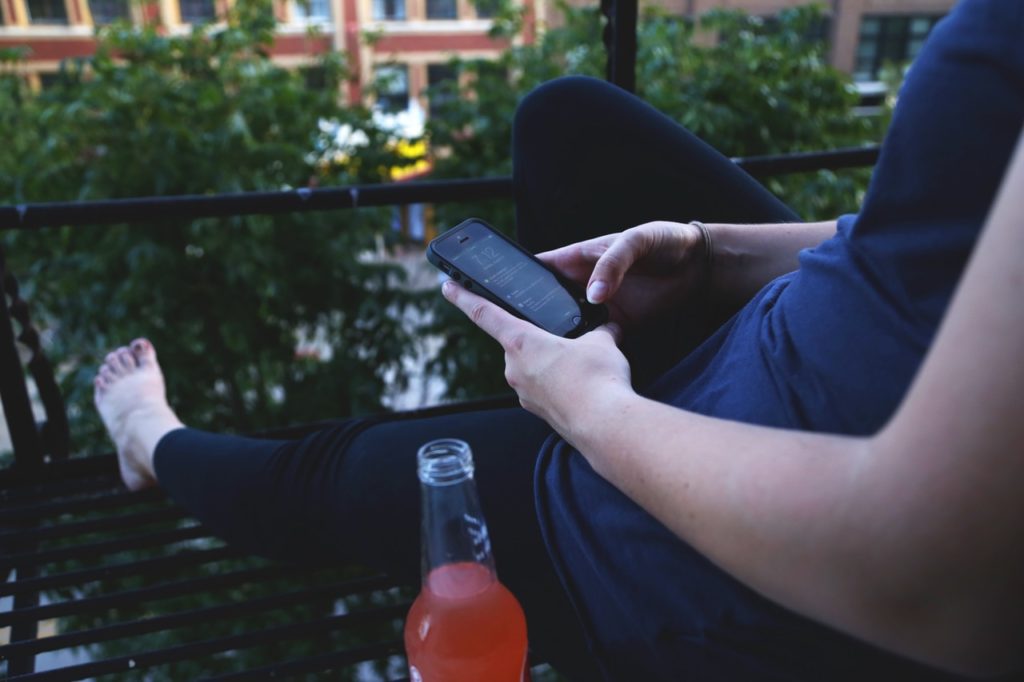In recent years, there’s been a great deal of emphasis on how the growing prevalence of smartphones is contributing to a more stressed-out society. But while there’s certainly evidence to suggest that too much smartphone use is not always a good thing, remarkably little attention has been paid to how smartphones can actually help to reduce stress. Read on to learn about some important ways you can use your smartphone as a stress-reduction tool.
1. Set location-aware reminders
To-do lists go a long way toward helping to reduce the mental energy you spend on trying to remember all the tasks that you have to accomplish. However, you still need to take the critical step of referring to your list at the right time and place. This is where location-aware reminders come in handy. Thanks to the GPS system on your smartphone, you can opt to receive reminders or alerts from your phone about things you need to do when you arrive at a specific location. For example, you could set your phone to always remind you to pick up a certain item whenever you’re at the grocery store that you know has the lowest price on that item. Location-aware reminders can also be set for when you leave—rather than arrive at—a location, such as a reminder to always take your lunch with you when you leave your house in the morning.

2. Set other context-driven reminders
Location isn’t the only factor you can use to set automatic reminders for yourself. For example, whenever the forecast on your favorite weather app calls for rain, your phone can send you an alert reminding you to take your umbrella.
3. Calm yourself with a heart rate app
There are a number of apps available that allow you to monitor your heart rate. However, even though these are geared toward helping people with their workout or fitness routines, they effectively do double duty as a meditation tool. If you’re feeling stressed out or anxious, practice taking slow, deep breaths while using a heart rate app. This way, you can see the effect that breathing more slowly is having on your heart in real time, which is a very calming form of biofeedback.
4. Track your thoughts without having to stop what you’re doing
Thanks to Apple’s Siri and the other virtual assistants that are available with different operating systems, you can make note of a thought as soon as it pops into your head without having to interrupt your current task. For example, are you chopping vegetables for dinner when you suddenly realize you used the last of the onions? Just say “Hey Siri, add onions to my shopping list.” This ensures that you won’t forget to make a note of this later (thoughts that pop quickly into our heads are just as likely to pop quickly out of them). You can also use Siri to perform tasks like setting a timer if you’re concerned you might become distracted or lost in thought while you’re working on a particular task. You will reduce your stress level by limiting the amount of mental energy you spend on recalling whatever you’re trying to remember and eliminating the frustrating mistakes that can happen when you’re distracted.
5. Use your camera to streamline tasks or to give yourself reminders
If you haven’t thought of your smartphone’s camera as a stress reduction tool, you might want to think again. The camera is an easy and effective way to keep track of valuable information, including details that you always want to have on hand like a photo of your driver’s license or things that you need to remember for a short time only, like where you parked your car. The camera can also help to reduce stress by streamlining certain commonly performed tasks. For example, if you have to e-mail someone a copy of a physical document, you can simply take and send a picture of it rather than having to scan, convert, and e-mail it.

6. Use maps and directions to avoid getting lost or stuck in traffic
If you’re on your way to an important appointment, it can be incredibly stressful if you find yourself stuck in traffic or driving down the wrong road. Happily, your smartphone makes an excellent navigator. Practice using Siri or another voice-activated assistant to enter your destination into your favorite maps app, and you can then receive personalized directions throughout your trip even if you accidentally change course on your way. You can also receive warnings about heavy traffic and suggestions for alternate routes.
7. Connect with loved ones who are elsewhere
While being physically apart from friends and family can be a stressful experience, your smartphone can help you to bridge the gap and maintain an emotional connection across whatever distance might separate you. There are so many ways to share photos or videos, send messages, and chat in real-time that you’ll never have to feel far away from loved ones for very long.

